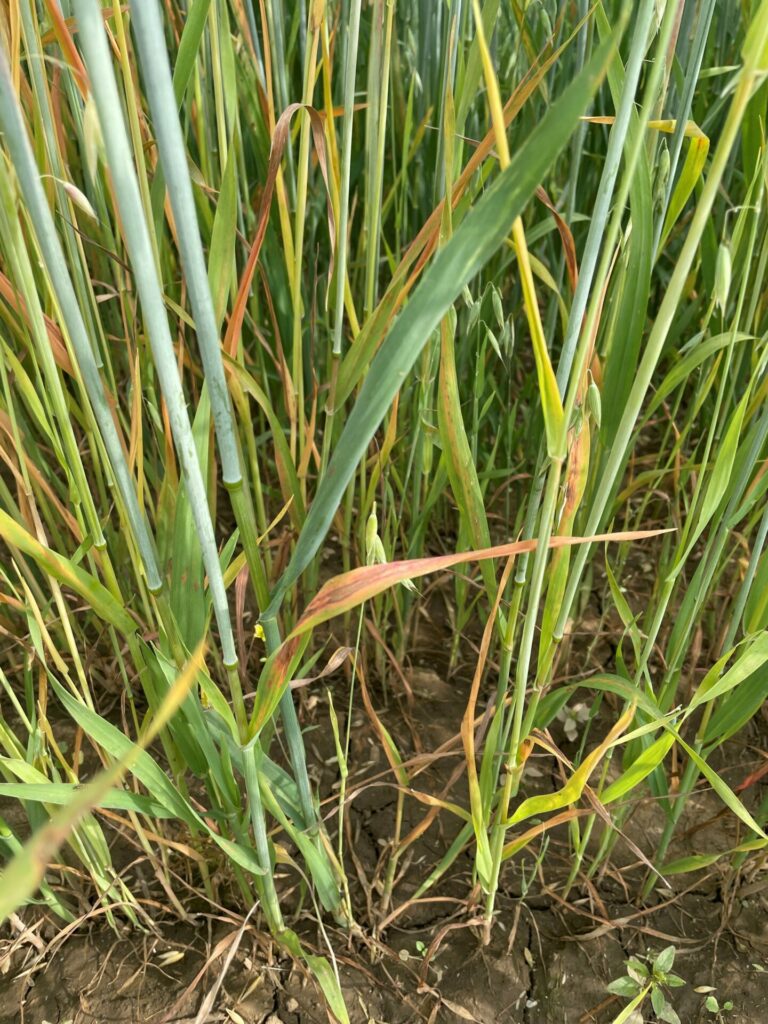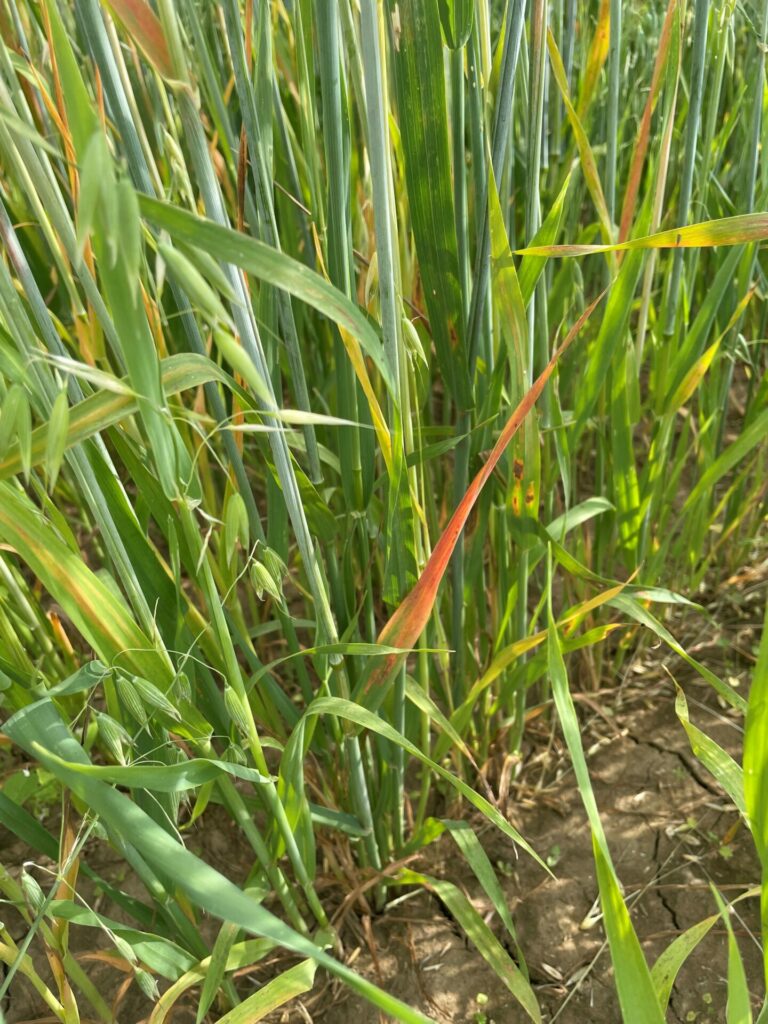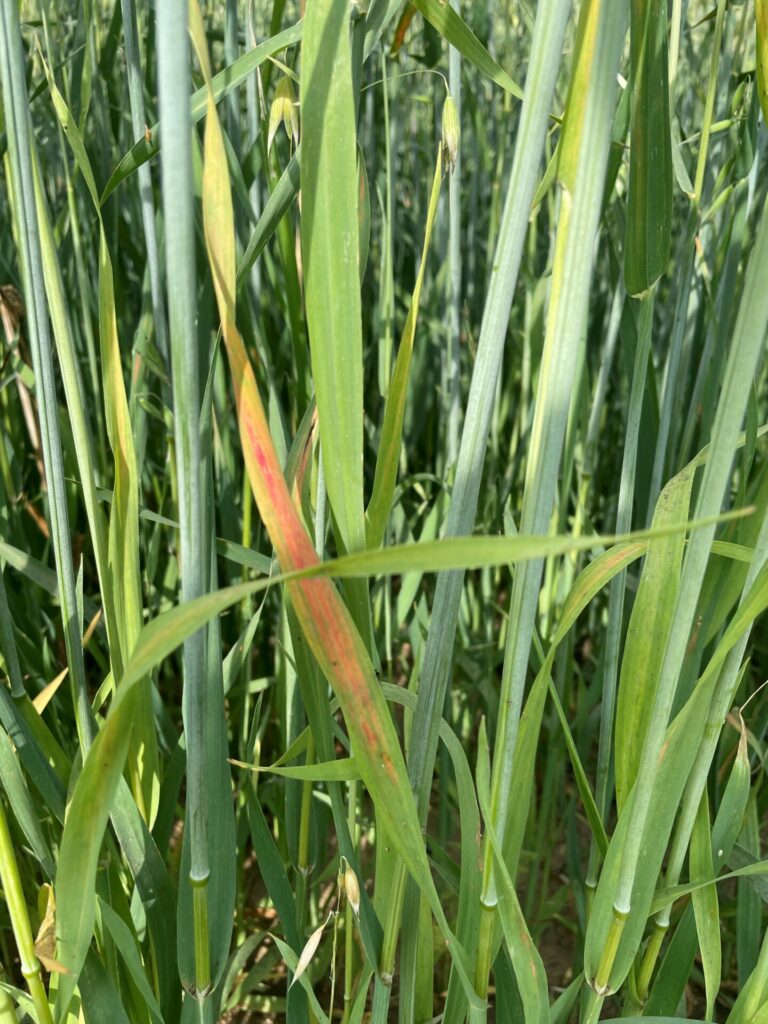Feature report from Dr. Mike Harding, Alberta Agriculture and Irrigation, Brooks, Alberta, August 14, 2024.
Barley yellow dwarf (BYD) is a disease in cereals that can occur in barley, wheat, oat and corn. It has now been reported in many fields in southern Alberta in 2024 – mainly on oat. The disease is caused by the barley yellow dwarf virus (BYDV). The virus is vectored by aphids and can cause a lot of damage when infections occur prior to heading. The symptoms can vary widely between barley, wheat and oat, and between varieties. The environment can also affect symptom expression, so it’s sometimes challenging to differentiate between BYDV infections and other diseases or nutrient deficiencies, or environmental stress. However, most infections in oat cause a reddish-purple or wine-red discoloration on the leaves. The red discoloration is often seen along the midrib, or at the tip and extending down along the leaf margins.
If genetic resistance is available, it can be very useful for managing the disease, but unfortunately BYDV-resistance is rare in cultivars grown on the Canadian Prairies, especially barley and wheat. However, for oat BYDV ratings are available and mainly reported in the Manitoba variety guide. There are a number of oat varieties with susceptible to moderately susceptible ratings, while other varieties have intermediate to high levels of resistance. Consult the Manitoba variety guide and the oat table for a complete listing of varieties and BYDV reactions. If available use a BYDV resistant oat variety. However, for crops and varieties where resistance isn’t available the best way to manage BYDV is to seed early in the spring as this helps the crop mature before large aphid populations appear later in the summer. When planning for next year, be careful to avoid a green bridge into 2025; do not seed winter cereals early in the fall because this will allow the virus to move into the fall-seeded crop and overwinter into 2025.
Viruliferous aphids carrying the BYDV are typically blown up from the USA and arrival times into the Prairie region vary each year. Typically, this doesn’t occur until well into July when aphids may become more abundant, especially in the western Prairie region. Symptoms are often limited on spring sown cereals as they have already headed and are well into the grain filling period. However, the appearance and impact may be more significant if cereals are planted later in the summer for swath grazing or where one may be double-cropping, i.e. seeding oat in July following silage harvesting of fall rye that was planted the previous fall. If you are planning on seeding oat later in the growing season one should be aware of a potential increased BYDV risk and try to plant varieties with some level of BYDV resistance.
Aphid populations can be reduced with insecticide applications, but they are rarely efficacious or economical because the aphids tend to ‘hide’ under the canopy and on the underside of leaves, and winged aphids can subsequently migrate into fields from adjacent areas after an application of insecticide. As a result, insecticides are generally not recommended.
Testing of samples in Southern Alberta to confirm BYDV can be done by Dr. Michael Harding (michael.harding@gov.ab.ca).
More information on BYDV can be found here:
Manitoba Agriculture – Barley Yellow Dwarf Virus
American Phytopathological Society, Plant Health Instructor, Barley Yellow Dwarf
Symptoms of BYDV in an oat cover crop, Alberta Agriculture and Irrigation (AAI), Brooks, AB, August 2024. Photo courtesy of Dr. Mike Harding, AAI Brooks.




